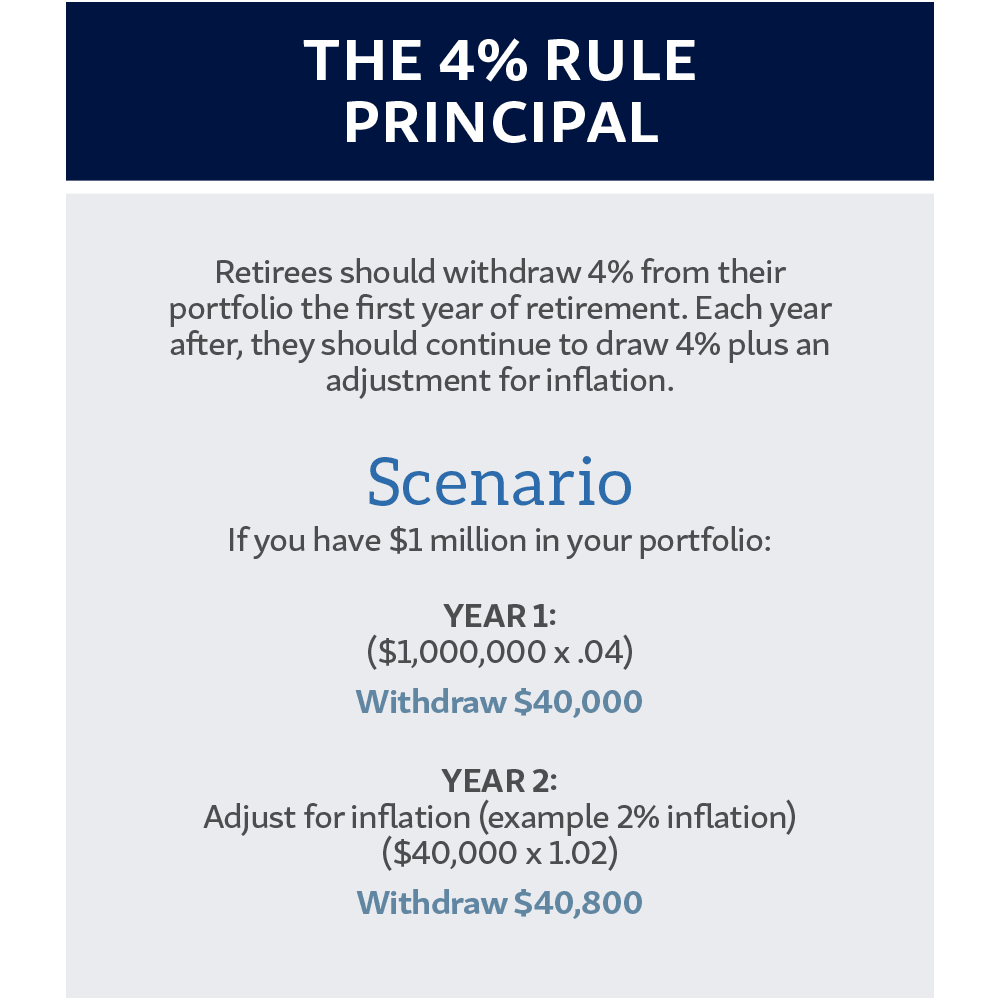
Report: Planning for Your Retirement
Planning for Your Retirement
Develop Your Income and Spending Plan
Retirement! Most Americans get excited about the day they no longer have to go to work to earn an income. No more bosses, no more meetings to attend, no more schedules to keep, no more stress that even the best of jobs can create. Retirement can be the beginning of an entirely new lifestyle.
Before reaching this milestone, it is important to create a plan that will allow you to enjoy this new stage in your life. Appropriately planning on how you’ll spend your time and money will help you have a favorable chance of enjoying a happy retirement.
Thinking about retirement can be fun, but as we age it is vital to consider how we want our retirement years to progress. What will you do in retirement? Will you fulfill bucket list items, go on trips or spend time with family members? It can become very challenging when determining how those plans will coordinate with your income streams, recurring expenses, and unexpected circumstances.
Properly using saved retirement funds is critical during this time period. Some major factors when planning for retirement and withdrawal rates are your:
1. Life expectancy
2. Healthcare costs
3. Lifestyle expectations
A miscalculation in withdrawal rates can be very costly and could leave you empty-handed during your later years.
For decades, financial planners and retirees have attempted to simplify how to calculate the amount of income a retired couple or individual can “comfortably” count on to pay their bills and maintain an expected retirement income projection. The old 4% rule was used to simplify this process and help estimate an investor’s portfolio withdrawal rate.
So, what is the “4% Rule?”


The 4% rule was the rule of thumb to help make retirement withdrawal calculations. However, it was developed in the mid-90s by using data on stock and bond returns between 1926 and 1976. Some points to note about the 4% rule and its development are:
During the 90s, bond interest rates were considerably higher than present day;
it assumed that portfolios all have a relatively balanced mix of stocks and bonds (around 60% stocks/40% bonds); and
it assumes the need for 30 years in retirement.
The big question today is, in a low interest rate environment, is this rule still relevant?
Over the past decade, interest rates have been at historically low rates. So, would a projection and calculations of the 4% rule still stand as strong and reliable estimations for your retirement?
Before answering, it is important to remember that even at best, the 4% rule is only a rule of thumb – it’s not a law! Retirement plans are individualized and specific to the needs and goals of each retiree. When interest rates were higher, the 4% rule might have been a good starting point because it tried to keep withdrawal rates reasonable. It also took inflation into account as the year’s progress. Even if you use 4% as a starting point, it should not be a replacement for creating a specific plan for your retirement success. This is where a qualified financial planner could add value.
Go Easy on Withdrawals
To be confident that a $1 million nest egg will support you over the long run, you have to set a low 3-4% withdrawal rate.

Considerations for Retirement Income Planning
You may not want to convert all of your savings to fixed income or CDs. Even when you are at retirement age and are starting to take withdrawals from your investments, it is still important to consider keeping a diversified portfolio. One of the reasons the 4% rule helped was the assumption that if your portfolio could grow by an average of 6% or 7% or more – then by withdrawing only 4% you still saw modest growth. Understanding that interest rates are currently low on fixed income investments and that your rate of return will fluctuate make it essential to revisit your portfolio allocations periodically
Resist the desire to overspend during good years. Market cycles could produce healthier returns during a good year. However, it is important that you do not view these better years as an opportunity to splurge. It is very easy to think, “I don’t want to limit myself to a 4% withdrawal, I can afford 10% during a good year.” Investors who maintain discipline and self-control are more likely to achieve a better long-term result.
Stay the course during bad years. Many investors benefit from setting up a “reservoir” for funding their withdrawals and bill payments during retirement. Market cycles are susceptible to bad times and those might be inopportune times to panic over income. Your plan needs to have a strategy in place for downturns. This is why we discuss risk tolerance as well as immediate needs with our clients. Investments are not meant to be handled on an emotional basis and therefore some advanced planning is required.
Cut back whenever possible. Even if you plan for a “comfortable” retirement with a 3% or 4% withdrawal rate, whenever possible consider staying below that rate. Even though you are retired and should be enjoying your life, maintaining financial prudence is still a wise decision. Savers find that it can be useful to be ahead when it comes to planning during retirement years.
Remember to consider taxes. When calculating your retirement withdrawals, you should always consider using the least taxing methods available to you. Coordinating the tax ramifications of where to take your distributions can prove to be valuable. Remember that when you withdraw money from your retirement plans you should first consider the tax impact. For example, money withdrawn from many traditional IRAs and company 401k plans can be subject to taxes.
Make the most of income dips. Of course, a tax strategy may call for an accountant or financial advisor, but perhaps in the year after you retire, with no paycheck coming in, you drop to the 15% bracket or you have medical expenses or charitable deductions that reduce your taxable income briefly before you bump back up to a higher bracket. Tapping into pretax accounts in low-tax years may enable you to pay less in taxes on future withdrawals. These are strategies we can discuss at your next review meeting.
Social Security decisions and income. Social Security income is something all retirees need to consider when crafting their retirement income plans. This is an area that can be complex. However, we can help you create your strategy. The Social Security program allows you to begin receiving benefits the month after you reach age 62, or to wait until your full retirement age, or even later. The longer you wait, the fewer checks you’ll receive. But the checks will be bigger if you wait (up to age 70), so a delay will produce a greater total benefit if you live long enough. The decision about when to start taking your benefits is partly a gamble on how long you’re going to live and partly a matter of economic circumstances and personal preferences. If you have any questions about your situation please call us.
Remember to consider required minimum distributions (RMDs). Retirees must start making required minimum distributions (RMDs) by age 70½. With a large retirement account, that income could push you into a higher tax bracket. There is even some potential new legislation that would delay this requirement to age 72 (The SECURE Act). This is another area of consideration that you should address in your plan.
Roth IRA Conversions. Some investors benefit from converting to Roth IRAs during retirement. This conversion can be done on a partial or full basis, but it is complicated and needs to be well planned. It will create immediate tax considerations and has its own set of complex rules including timelines before you can take withdrawals without penalties. Before making any Roth IRA conversion decisions, it is important to talk to a qualified tax professional to determine the tax consequences. A poorly designed conversion plan can be very costly.
What is your primary goal?
When designing your retirement income plan it is critical to first define your primary goal and then focus your plan around that goal. Your decisions should be based on lifestyle habits and financial discipline. It has become very expensive to live! Clothing, entertainment and dining choices can add up quickly. Healthcare costs can take a large chunk of your retirement income as well. Consider all the things you want to do in retirement, all the things that must be funded for in retirement and then determine how they affect your anticipated withdrawal rate. Although retirement should be a time to spend relaxing and enjoying life, you still should have a plan in place for your retirement income needs.
The primary purpose of retirement income planning is to maximize your use of savings and retirement accounts. Having the right professional helping you along the way can greatly streamline this process and help alleviate any pitfalls or challenges that may arise. Trying to create and manage your retirement income by yourself can be challenging. You should always seek out the advice of qualified tax and financial professionals who can work with you to make sure that your plan is properly implemented on your specific terms.

